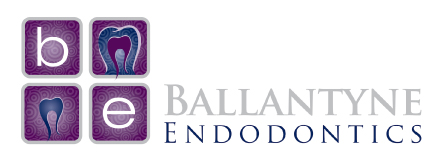What is Root Resorption?
Key Takeaways:
Understanding Root Resorption:
Root resorption is the process where the body’s cells break down tooth roots, typically to facilitate the transition from baby teeth to permanent teeth.
Causes and Symptoms:
Several factors contribute to root resorption, including trauma, orthodontic treatment, infections, and genetic predisposition. Symptoms can include tooth sensitivity, gum swelling, loose teeth, and discoloration.
Treatment and Prevention:
Treatment options vary depending on the severity of root resorption, ranging from monitoring in mild cases to root canal therapy or surgical intervention for more advanced cases.
When one of our patients is experiencing root resorption, sometimes they ask, “So… what is root resorption?” And no wonder! This isn’t something that’s commonly talked about outside of the dental world.
Root resorption, though lesser known, remains an important threat to dental health. It occurs when tooth roots break down and absorb into the body – which could ultimately result in their loss if left untreated.
Root resorption is when the body mistakenly begins to break down the structure of a tooth’s root. This issue can affect both baby and permanent teeth, although it’s more problematic in the latter due to their critical role in oral function. There are two types of resorption: internal and external. Internal resorption occurs from the inside of the tooth, where the pulp (soft tissue within the tooth) becomes inflamed and leads to the breakdown of the inner root structure. External resorption, on the other hand, originates from the outer surface of the tooth and may spread inward.
We hope this article helps improve your awareness of oral health. We believe an informed patient is an empowered patient.
Of course, nothing in this article is a substitute for professional dental care. With so many variables, every aspect of dental care is specific to each patient.
In this blog post, we’ll tell you what root resorption is, what can cause it, the signs and symptoms of it, and how to treat it.
What is Root Resorption?
Root resorption refers to the body’s cells breaking down the roots of teeth to make way for permanent ones, often making the transition easier for baby teeth. But when this process affects permanent teeth instead, it can create significant dental issues and pose health risks.
There are different areas within your mouth where the resorption may start.
- Internal resorption starts at the inner surface of the tooth’s root.
- External resorption – this starts at an outer surface where the root connects to the jawbone. This is the most common form of resorption.
With internal resorption, the inside of your tooth is absorbed into the root canal therapy Charlotte, NC. If this progresses, it can leave the inside of your tooth hollow. On the other hand, external resorption causes the outside portions of the root to deteriorate. Both are the result of inflammation and the sooner you treat them, the better. They’re both quite destructive, and they can eventually lead to tooth loss.
A Few Causes of Root Resorption
We don’t always know what causes root resorption in adults. Fortunately, it is a rare condition in adults, though it is healthy and natural in growing children.
Root resorption has several potential causes, often linked to trauma or stress on the teeth. Some common triggers include:
Trauma
A physical injury to the teeth, such as a blow or fall, can trigger root resorption as the body responds by attacking the root. Traumatic injuries caused by accidents or injuries can lead to root resorption, as the impact damages root structures, prompting the body to dissolve them naturally.
Orthodontic Treatment
Orthodontic treatments such as braces or Invisalign may inadvertently cause root resorption. The pressure applied to teeth during orthodontic adjustments (like braces) can lead to resorption. Although this pressure is controlled and generally safe, some individuals may experience more aggressive tooth resorption.
Infections
Chronic infection or inflammation in the surrounding tissues can cause the body to break down the roots of a tooth.
Genetics
Certain individuals may be predisposed genetically to root resorption, making them more prone to its symptoms. Some individuals may have a genetic predisposition to resorption.
Baby Root Resorption
Children experience root resorption when they lose their baby teeth. When the baby tooth is ready to fall out, the brain and body give a signal allowing the bone between the baby tooth and permanent tooth to waste away. The baby tooth’s root also wastes away, and then the tooth falls out. This is natural and allows space for permanent teeth.
However, it is not common or beneficial when it happens to adults. It may be the result of tooth nerve damage, gum damage, or trauma to the tooth. Chronic grinding and other low-level damage may also contribute to root resorption.
Root resorption can affect:
- The tooth’s interior pulp.
- The root.
- Cementum, which covers the tooth’s root.
- Dentin, is the second-hardest tissue in the human body, after enamel.
Cysts or tumors
Sometimes, growths near a tooth root can lead to resorption as the body attempts to eliminate the abnormal cells.
Pressure From Impacted Teeth
In some cases, impacted teeth that don’t erupt properly can press on neighboring teeth, causing resorption.
Autoimmune Diseases
Certain autoimmune conditions may mistakenly cause the body to attack healthy tooth structures.
Signs and Symptoms of Root Resorption
In the early stages, root resorption can be painless and difficult to detect without the help of dental X-rays. However, as the process advances, some symptoms may emerge, including:
- Tooth Sensitivity: You may notice increased sensitivity to hot or cold temperatures or pressure on the affected tooth.
- Swelling: Swelling or inflammation in the gums around the affected tooth.
- Loose Teeth: As roots resorb over time, teeth may become loose or mobile.
- Discoloration: Caused by internal root resorption should always be seen immediately by a dentist for an accurate diagnosis and appropriate treatment plan.
If you notice any of these symptoms, talk with your dentist immediately. Even if resorption isn’t happening, all of these signs indicate some kind of oral health issue.
Since someone may experience resorption but may be asymptomatic (as in, not having any of those symptoms outlined above), it is crucial to maintain a regular schedule of oral health examinations and professional cleanings. Since you probably won’t feel any pain when you’re experiencing resorption, it’s extremely critical to get x-rays at your regular dental visits, because that’s where your dentist can detect these lesions. Also, consistently following at-home hygiene recommendations like brushing and flossing daily may help prevent root resorption from happening.
Sometimes resorption may contribute to other complications, such as:
- Infection or inflammation
- Crooked teeth or misalignments
- Tooth discoloration and weakness
- Chips and fractures in the tooth
- Cavity-like holes
- Tooth loss
- Recession at the Roots
- Pain
Keep in mind there may be other causes for these oral health issues, so always discuss any concerns with your dental health provider.
After you receive treatment for resorption, you may also want to schedule an appointment with a cosmetic dentist. Resorption can negatively impact the appearance of your teeth, but there are lots of great solutions out there to make your smile bright again, like cosmetic crowns, veneers, and implants.
According to Colgate, other than children, root resorption is most common in people between 21 and 30, especially women. It is also more common among people who have systemic diseases or endocrine disorders. In rare cases, it can be the result of pressure from a tumor.
Always keep your dentist informed about any health conditions you experience, since sometimes the condition or treatment may have oral health implications to watch out for.
Root Resorption Treatment
Treatment varies depending on the cause and severity of the case. Your dental team will most likely need to take images like X-rays and thoroughly examine them. The images will help your dentist see signs of the resorption’s progress, as well as other changes to your oral health.
The effectiveness of root resorption treatment depends upon its severity and extent of damage to affected teeth. Below are some possible approaches:
- Monitoring: If resorption is detected early and isn’t progressing quickly, a dentist may choose to simply monitor the condition through regular x-rays and check-ups.
- Root Canal Therapy: In cases of internal resorption, where the pulp is damaged, a root canal may be necessary to clean out the affected tissues and seal the tooth, preventing further destruction.
- Intervention by Surgery: For severe cases, especially external resorption, surgery may be required to remove the damaged portion of the tooth or surrounding tissues.
- Adjustments to Orthodontic Treatment Plans: Should orthodontic treatments have caused root resorption, changes may need to be made to their plans to minimize further damage.
- Tooth extraction: If the tooth is too damaged to be saved, extraction may be the only viable option. This is usually followed by the placement of an implant or a bridge to restore functionality.
- Cosmetic repairs: In cases where the tooth’s appearance has been affected, crowns or veneers can be used to restore its aesthetic appeal.
Prevention and Maintenance
While root resorption isn’t always preventable, regular dental check-ups can catch the problem early. People undergoing orthodontic treatments should have periodic X-rays to monitor for any early signs. Protecting your teeth from trauma, such as wearing mouthguards during sports, can also help reduce the risk.
Additionally, maintaining good oral hygiene and addressing any signs of gum disease or infection promptly will keep the surrounding tissues healthy and may prevent resorption triggered by inflammation.
In summary, root resorption is a serious dental issue that requires prompt attention. Whether it’s internal or external, the condition can lead to tooth loss if not treated early. Regular dental visits, especially if you’ve had orthodontic work or tooth trauma, are essential in catching root resorption before it causes extensive damage.
Seek Professional Dental Care
Root resorption is a potentially severe dental condition that needs prompt diagnosis and treatment to avoid further complications. By becoming familiar with its causes, symptoms, and available solutions, individuals can take proactive steps toward maintaining their dental health. If you suspect or experience related symptoms, don’t delay in consulting your dentist.
The team at Ballantyne Endodontics feels privileged to help Charlotte-area residents maintain their natural teeth. Natural teeth help maintain balance and a healthy structure within the mouth. Nothing looks and feels like your own teeth!
If your dentist says you need a root canal or other endodontic treatment, we urge you to ask for a referral to an endodontist like us. We are dental specialists who focus on tooth restoration and root canal treatments.
If you live in or near Charlotte and need endodontic care, contact the team at Ballantyne Endodontics for a consultation.

